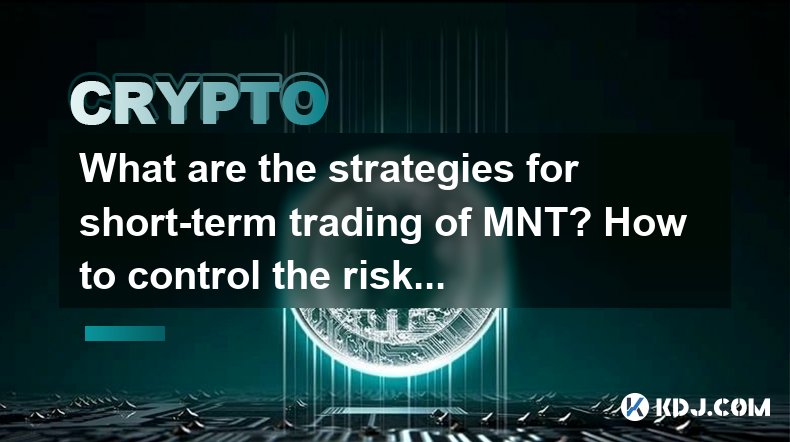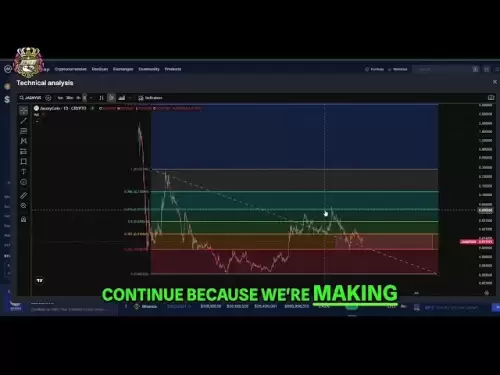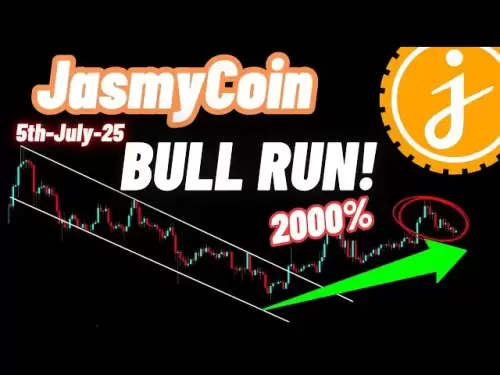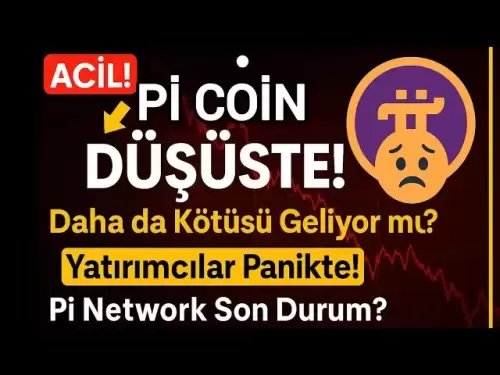-
 Bitcoin
Bitcoin $108,250.0992
0.11% -
 Ethereum
Ethereum $2,515.9404
0.03% -
 Tether USDt
Tether USDt $1.0003
0.00% -
 XRP
XRP $2.2166
-0.19% -
 BNB
BNB $656.5904
0.29% -
 Solana
Solana $147.4122
-0.58% -
 USDC
USDC $1.0000
-0.01% -
 TRON
TRON $0.2830
0.06% -
 Dogecoin
Dogecoin $0.1641
0.27% -
 Cardano
Cardano $0.5739
-0.19% -
 Hyperliquid
Hyperliquid $39.1463
-0.11% -
 Sui
Sui $2.8882
-0.02% -
 Bitcoin Cash
Bitcoin Cash $487.6428
0.31% -
 Chainlink
Chainlink $13.2097
0.07% -
 UNUS SED LEO
UNUS SED LEO $9.0308
0.10% -
 Avalanche
Avalanche $17.8608
0.13% -
 Stellar
Stellar $0.2379
-0.06% -
 Toncoin
Toncoin $2.7400
-0.39% -
 Shiba Inu
Shiba Inu $0.0...01144
-0.36% -
 Litecoin
Litecoin $87.5467
0.66% -
 Hedera
Hedera $0.1538
0.22% -
 Monero
Monero $315.5479
0.36% -
 Dai
Dai $1.0000
0.00% -
 Polkadot
Polkadot $3.3523
-0.71% -
 Ethena USDe
Ethena USDe $1.0003
0.01% -
 Bitget Token
Bitget Token $4.3960
-1.03% -
 Uniswap
Uniswap $7.2663
4.19% -
 Aave
Aave $272.8619
2.04% -
 Pepe
Pepe $0.0...09676
-0.18% -
 Pi
Pi $0.4586
-2.87%
What are the strategies for short-term trading of MNT? How to control the risk-return ratio?
Short-term MNT trading strategies include scalping, day trading, swing trading, and arbitrage. Control risk with stop-losses, position sizing, and diversification.
May 01, 2025 at 08:14 am

What are the strategies for short-term trading of MNT? How to control the risk-return ratio?
Short-term trading of MNT, the native token of the Mantle Network, can be an exciting yet challenging endeavor. To navigate this volatile market effectively, traders need to employ specific strategies and manage their risk-return ratio meticulously. This article will delve into various strategies for short-term trading of MNT and provide detailed guidance on controlling the risk-return ratio.
Understanding MNT and Short-Term Trading
MNT is the governance token of the Mantle Network, a layer-2 scaling solution for Ethereum. Short-term trading involves buying and selling MNT within a short period, typically ranging from a few minutes to a few days, to capitalize on price fluctuations. This approach requires a keen understanding of market trends, technical analysis, and risk management.
Strategy 1: Scalping
Scalping is a popular strategy for short-term trading of MNT. It involves making numerous trades throughout the day to profit from small price changes. Here's how to implement scalping:
- Choose a reliable trading platform that offers real-time data and low transaction fees.
- Monitor the MNT price chart closely, focusing on short-term price movements.
- Set tight stop-loss orders to minimize potential losses.
- Execute trades quickly to take advantage of small price movements.
Scalping requires discipline and a high level of attention to detail, as traders need to be constantly vigilant to market changes.
Strategy 2: Day Trading
Day trading involves buying and selling MNT within the same trading day. This strategy aims to profit from intraday price movements. Here's how to approach day trading:
- Analyze MNT's daily price chart to identify potential entry and exit points.
- Use technical indicators such as moving averages, RSI, and MACD to gauge market momentum.
- Set clear profit targets and stop-loss levels to manage risk effectively.
- Avoid holding positions overnight to minimize exposure to overnight market volatility.
Day trading requires a solid understanding of technical analysis and the ability to make quick decisions based on market data.
Strategy 3: Swing Trading
Swing trading involves holding MNT for a few days to a few weeks to capitalize on medium-term price swings. This strategy is less time-intensive than scalping and day trading but still requires active monitoring. Here's how to implement swing trading:
- Analyze MNT's weekly and daily charts to identify potential swing points.
- Use trend lines and support/resistance levels to determine entry and exit points.
- Set wider stop-loss orders to account for larger price movements.
- Monitor market news and events that could impact MNT's price.
Swing trading requires patience and a good understanding of market trends and patterns.
Strategy 4: Arbitrage
Arbitrage involves exploiting price differences of MNT across different exchanges. This strategy can be highly profitable but requires quick execution. Here's how to implement arbitrage:
- Monitor MNT prices on multiple exchanges simultaneously.
- Identify price discrepancies between exchanges.
- Execute buy and sell orders quickly to capitalize on the price difference.
- Account for transaction fees to ensure the arbitrage opportunity is profitable.
Arbitrage requires access to multiple trading platforms and the ability to act swiftly on price discrepancies.
Controlling the Risk-Return Ratio
Effective risk management is crucial for short-term trading of MNT. Here are some strategies to control the risk-return ratio:
Set Stop-Loss Orders: Always set stop-loss orders to limit potential losses. For example, if you buy MNT at $1.00, you might set a stop-loss at $0.95 to limit your loss to 5%.
Use Position Sizing: Determine the size of your position based on your risk tolerance. For instance, if you're willing to risk 1% of your trading capital on a single trade, calculate the position size accordingly.
Diversify Your Portfolio: Don't put all your capital into MNT. Diversify across different cryptocurrencies to spread risk.
Monitor Leverage: If you're using leverage, be cautious. High leverage can amplify both gains and losses. Use leverage sparingly and always be aware of the potential for liquidation.
Keep a Trading Journal: Document your trades, including entry and exit points, reasons for the trade, and outcomes. This helps you learn from past trades and refine your strategy.
Stay Informed: Keep up with news and developments related to MNT and the broader cryptocurrency market. Unexpected news can significantly impact prices.
Implementing Risk Management in Practice
To illustrate how to implement these risk management strategies, let's consider a hypothetical scenario:
Scenario: You decide to day trade MNT. You have a trading capital of $10,000 and are willing to risk 1% per trade.
Position Sizing: 1% of $10,000 is $100. If you buy MNT at $1.00, you can buy 100 MNT.
Stop-Loss Order: You set a stop-loss at $0.95, limiting your potential loss to $50 (50% of your risk per trade).
Profit Target: You set a profit target at $1.05, aiming for a $50 profit (50% of your risk per trade).
Execution: You enter the trade, and if MNT reaches $1.05, you sell and take a $50 profit. If MNT drops to $0.95, your stop-loss order triggers, and you exit with a $50 loss.
By following these steps, you maintain a balanced risk-return ratio and protect your trading capital.
Frequently Asked Questions
Q1: How often should I review my trading strategy for MNT?
It's advisable to review your trading strategy regularly, at least weekly, to ensure it aligns with current market conditions. Adjustments may be necessary based on new market trends or changes in MNT's performance.
Q2: Can I use automated trading bots for short-term trading of MNT?
Yes, automated trading bots can be used for short-term trading of MNT. However, it's crucial to thoroughly test and monitor these bots to ensure they perform as expected and align with your risk management strategy.
Q3: What are the key indicators to watch for when trading MNT short-term?
Key indicators to watch include moving averages, RSI (Relative Strength Index), MACD (Moving Average Convergence Divergence), and volume. These indicators help gauge market momentum and potential reversal points.
Q4: How can I stay updated on MNT's market news and developments?
To stay updated, follow reputable cryptocurrency news sources, join MNT's official social media channels, and participate in relevant online communities and forums. This will help you stay informed about any developments that could impact MNT's price.
Disclaimer:info@kdj.com
The information provided is not trading advice. kdj.com does not assume any responsibility for any investments made based on the information provided in this article. Cryptocurrencies are highly volatile and it is highly recommended that you invest with caution after thorough research!
If you believe that the content used on this website infringes your copyright, please contact us immediately (info@kdj.com) and we will delete it promptly.
- Chainlink's Bullish Blueprint: Price Prediction and the Harmonic Pattern
- 2025-07-06 06:30:12
- Ruvi AI: The Audited Token Promising ROI That'll Make Your Head Spin
- 2025-07-06 06:30:12
- Ethereum Bull Run: Double the Potential in 2025?
- 2025-07-06 06:50:13
- Ruvi AI, Token, and Dogecoin: The Next Big Thing in Crypto?
- 2025-07-06 06:35:13
- Ethereum: Stability and Adoption Fueling Mainstream Finance
- 2025-07-06 07:10:12
- Meme Coins: Will They Jump Again? A New Yorker's Take on the Investment Craze
- 2025-07-06 06:50:13
Related knowledge

How to customize USDT TRC20 mining fees? Flexible adjustment tutorial
Jun 13,2025 at 01:42am
Understanding USDT TRC20 Mining FeesMining fees on the TRON (TRC20) network are essential for processing transactions. Unlike Bitcoin or Ethereum, where miners directly validate transactions, TRON uses a delegated proof-of-stake (DPoS) mechanism. However, users still need to pay bandwidth and energy fees, which are collectively referred to as 'mining fe...

USDT TRC20 transaction is stuck? Solution summary
Jun 14,2025 at 11:15pm
Understanding USDT TRC20 TransactionsWhen users mention that a USDT TRC20 transaction is stuck, they typically refer to a situation where the transfer of Tether (USDT) on the TRON blockchain has not been confirmed for an extended period. This issue may arise due to various reasons such as network congestion, insufficient transaction fees, or wallet-rela...

How to cancel USDT TRC20 unconfirmed transactions? Operation guide
Jun 13,2025 at 11:01pm
Understanding USDT TRC20 Unconfirmed TransactionsWhen dealing with USDT TRC20 transactions, it’s crucial to understand what an unconfirmed transaction means. An unconfirmed transaction is one that has been broadcasted to the blockchain network but hasn’t yet been included in a block. This typically occurs due to low transaction fees or network congestio...

How to check USDT TRC20 balance? Introduction to multiple query methods
Jun 21,2025 at 02:42am
Understanding USDT TRC20 and Its ImportanceUSDT (Tether) is one of the most widely used stablecoins in the cryptocurrency market. It exists on multiple blockchain networks, including TRC20, which operates on the Tron (TRX) network. Checking your USDT TRC20 balance accurately is crucial for users who hold or transact with this asset. Whether you're sendi...

What to do if USDT TRC20 transfers are congested? Speed up trading skills
Jun 13,2025 at 09:56am
Understanding USDT TRC20 Transfer CongestionWhen transferring USDT TRC20, users may occasionally experience delays or congestion. This typically occurs due to network overload on the TRON blockchain, which hosts the TRC20 version of Tether. Unlike the ERC20 variant (which runs on Ethereum), TRC20 transactions are generally faster and cheaper, but during...

The relationship between USDT TRC20 and TRON chain: technical background analysis
Jun 12,2025 at 01:28pm
What is USDT TRC20?USDT TRC20 refers to the Tether (USDT) token issued on the TRON blockchain using the TRC-20 standard. Unlike the more commonly known ERC-20 version of USDT (which runs on Ethereum), the TRC-20 variant leverages the TRON network's infrastructure for faster and cheaper transactions. The emergence of this version came as part of Tether’s...

How to customize USDT TRC20 mining fees? Flexible adjustment tutorial
Jun 13,2025 at 01:42am
Understanding USDT TRC20 Mining FeesMining fees on the TRON (TRC20) network are essential for processing transactions. Unlike Bitcoin or Ethereum, where miners directly validate transactions, TRON uses a delegated proof-of-stake (DPoS) mechanism. However, users still need to pay bandwidth and energy fees, which are collectively referred to as 'mining fe...

USDT TRC20 transaction is stuck? Solution summary
Jun 14,2025 at 11:15pm
Understanding USDT TRC20 TransactionsWhen users mention that a USDT TRC20 transaction is stuck, they typically refer to a situation where the transfer of Tether (USDT) on the TRON blockchain has not been confirmed for an extended period. This issue may arise due to various reasons such as network congestion, insufficient transaction fees, or wallet-rela...

How to cancel USDT TRC20 unconfirmed transactions? Operation guide
Jun 13,2025 at 11:01pm
Understanding USDT TRC20 Unconfirmed TransactionsWhen dealing with USDT TRC20 transactions, it’s crucial to understand what an unconfirmed transaction means. An unconfirmed transaction is one that has been broadcasted to the blockchain network but hasn’t yet been included in a block. This typically occurs due to low transaction fees or network congestio...

How to check USDT TRC20 balance? Introduction to multiple query methods
Jun 21,2025 at 02:42am
Understanding USDT TRC20 and Its ImportanceUSDT (Tether) is one of the most widely used stablecoins in the cryptocurrency market. It exists on multiple blockchain networks, including TRC20, which operates on the Tron (TRX) network. Checking your USDT TRC20 balance accurately is crucial for users who hold or transact with this asset. Whether you're sendi...

What to do if USDT TRC20 transfers are congested? Speed up trading skills
Jun 13,2025 at 09:56am
Understanding USDT TRC20 Transfer CongestionWhen transferring USDT TRC20, users may occasionally experience delays or congestion. This typically occurs due to network overload on the TRON blockchain, which hosts the TRC20 version of Tether. Unlike the ERC20 variant (which runs on Ethereum), TRC20 transactions are generally faster and cheaper, but during...

The relationship between USDT TRC20 and TRON chain: technical background analysis
Jun 12,2025 at 01:28pm
What is USDT TRC20?USDT TRC20 refers to the Tether (USDT) token issued on the TRON blockchain using the TRC-20 standard. Unlike the more commonly known ERC-20 version of USDT (which runs on Ethereum), the TRC-20 variant leverages the TRON network's infrastructure for faster and cheaper transactions. The emergence of this version came as part of Tether’s...
See all articles

























































































